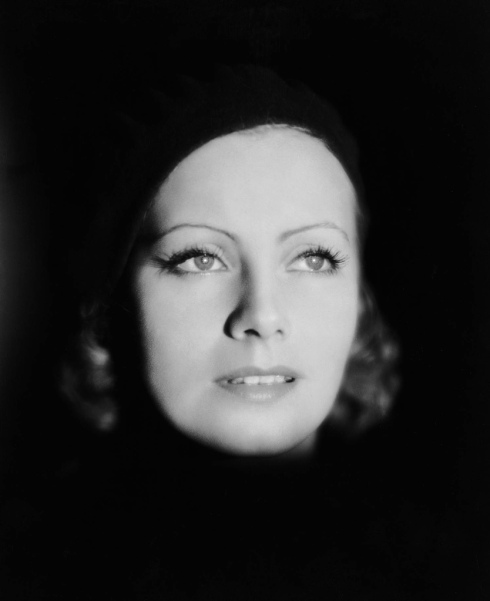Swedish actress Greta Garbo accomplished in less than two decades what advocates for women’s rights had sought for centuries: she showed the American public that feminine sexuality was compatible with intelligence. During the 1920s, when liberated flappers still attracted scorn from mainstream society, Garbo’s depiction of independent yet feminine beauties helped convince millions of American women that sexual initiative was not a man’s prerogative. Garbo “was allowed the right to have amorous needs and desires,” according to biographer Karen Swenson, and her popularity with both sexes enabled her to challenge “traditional roles with few negative consequences.” At the same time, Hollywood’s highest paid female star eschewed media attention and created a mystical image around her indifference to public opinion. At the age of thirty-six, Garbo retired to a life of almost hermetic seclusion. Film critic David Thomson saliently observed that “in making the journey away from fame into privacy she established herself forever as a magical figure, a true goddess, remote and austere, but intimate and touching.”
Hollywood’s Viking beauty began life as Greta Lovisa Gustafsson on September 18, 1905. She grew up in an impoverished Stockholm household and went to work as a lather girl in a barber shop at age fourteen. By sixteen, the aspiring actress had garnered admission to Sweden’s exclusive Royal Dramatic Theater Academy. She soon impressed Scandinavia’s foremost director, Mauritz Stiller, with her perfect instincts and dignified beauty. He gave her the stage name Garbo and cast her as Countess Elizabeth Dohna in the silent screen masterpiece The Story of Gosta Berling.
A leading role in G. W. Pabst’s Joyless Street (1925) soon followed. The part, that of a struggling Viennese women on the verge of prostitution, permitted Garbo to explore sexuality on screen for the first time. The film itself shattered box office records and became an enduring masterpiece of realistic cinema. Garbo’s great break occurred when Louis Mayer of Metro-Goldwyn-Mayer recruited Stiller for his Hollywood studios. The established director insisted that his relatively obscure nineteen-year-old starlet accompany him to the United States. Stiller was soon exported back to Stockholm while Garbo became a box office sensation.
The eleven silent movies that Garbo filmed between 1925 and 1929 earned her critical claim as Hollywood’s most talented female actress. Starring across from leading man John Gilbert in Flesh and the Devil (1927) and Love (1927) she awed audiences and shocked censors with her forthright sexuality. Garbo displayed her wide range playing a Spanish opera singer in The Torrent (1926), a Russian spy in The Mysterious Lady (1928), an English aristocrat in A Women of Affairs (1928) and a southern belle in Wild Orchids (1929). The star’s appearance influenced an entire generation as millions of female fans copied her tastes in clothing and hair styles. Crazes for artificial eye lashes and cloche hats swept the nation. Meanwhile Garbo, whom Claire Booth Luce described as “a deer in the body of a woman living resentfully in the Hollywood zoo,” distanced herself from both the public and the Los Angeles social scene.
Garbo may have been one of the leading box office draws of the silent era but few critics expected her to make the transition to talkies. The advent of sound ended the careers of most silent stars and the Swede’s deep voice and heavy accent were expected to turn off audiences. Instead, the twenty-five-year-old actress gave her most compelling performance in an adaptation of Eugene O’Neill’s play Anna Christie (1930). She played a waterfront streetwalker searching for her barge-captain father. Her opening words, at that time the longest sound sequence ever heard in a film, are cinematic legend: “Gimme a whiskey, ginger ale on the side … and don’t be stingy, baby!” Other hits followed. Mata Hari (1932), Queen Christina (1935), Anna Karenina (1935) and Camille (1936) confirmed her reputation as the leading lady of the early sound era. Garbo’s greatest role, that of the suicidal Russian dancer Grusinskaya in Grand Hotel (1932), ranks among the best female leads ever seen on the large screen. It is here that she declares her haunting wish: “But I want to be alone.” After surprising success as the comic lead in Ninotchka (1939), Garbo filmed the lackluster Two-Face Woman (1941) and then retired from the public eye. She was thirty-six years old.

During the last five decades of Garbo’s life, “The Scandinavian Sphinx” established herself as cinema’s leading enigma. She travelled extensively but turned down all requests for public appearances. Instead, she entertained such close friends as Winston Churchill and Martha Graham in her posh New York City apartment. As one of the grande dames of American cinema, her intimates included William Paley, Anthony Eden, Jean Cocteau, Irwin Shaw, Dag Hammarsjokld, Cole Porter, and Jacqueline Kennedy. She also devoted herself to amassing an internationally renowned art collection which boasted masterpieces by Renoir and Bonnard. Garbo received an Honorary Academy Award in 1954 for “unforgettable screen performances.” She died in New York City on April 15, 1990.
Greta Garbo entered the American consciousness during the mid-1920s at an historical moment when gender roles were in flux. The young actress came to represent a palatable form of female liberation and brought the icon of the independent woman home to Middle America. As biographer Karen Swenson described the star, “Her intimate posture and kisses suggested a woman—not a vamp—who was secure in her sexuality.” Garbo’s influence endured long after she became film’s most celebrated recluse. Throughout her life, she remained private, elusive, and conspicuously unmarried. “There is no one who would have me. I can’t cook,” she once joked—displaying the combination of independence and feminine intelligence which made her famous.
Source: St. James Encyclopedia of Popular Culture, St. James Press (2002) Gale Group








